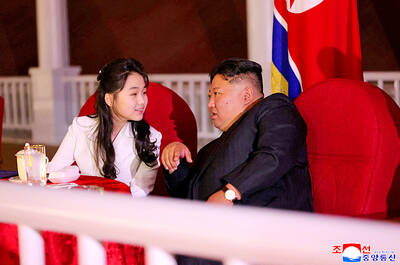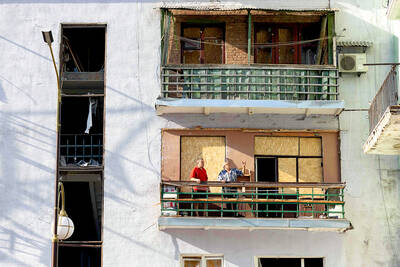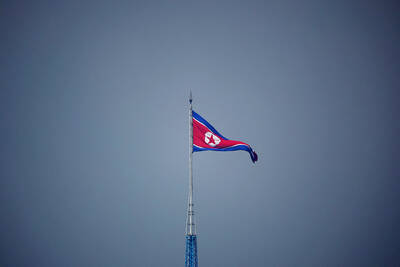Relations between British Prime Minister Tony Blair and Chancellor of the Exchequer Gordon Brown's camp are described by both sides as dangerous, with only a few figures at the heart of the dispute still hopeful that the crisis can be resolved without the blood-letting that ended Thatcherism and left the Tory party unelectable for a decade.
At dispute is whether a private assurance on a handover date is any longer sufficient.
Both men were on the brink of open warfare on Sunday. Brown in two TV appearances and a charity walkabout gave the impression of a man on the campaign trail waiting impatiently for the prime minister to call it a day. He stuck to his mantra of wanting a stable and orderly transition, but he did so in the knowledge that forces are now organizing on the backbenches, on the party national executive and in the unions to prise Blair from office.
But he discreetly encouraged those forces, saying it was for others in the party to pursue the transition question. His aim remains to build sufficient political pressure that Blair relents, so the crisis does not start going into formal party machinery, the publication of letters or let alone a backbench stalking horse challenge.
"We have got to avoid that at almost all costs," one senior Brownite said.
Blair, by contrast, sent out his toughest allies, John Reid and Stephen Byers, to accuse those rallying to throw him out of staging a coup.
Today Blair will hope to see off his backbench critics at a meeting of the parliamentary party, but the key Brownites insisted a stage-managed show of support for the prime minister in committee room 15 at Westminster will not mean the crisis has passed like some summer storm. They insist the political weather has changed for good.
Brown remains in the position of plausible deniability in that he genuinely does not want an ugly end, let alone a coup, but instead a public date for the prime minister's departure. Private assurances previously given, and broken, will not do.
In his interviews he appeared to distance himself from those members of parliament (MPs) and organizations such as Compass drafting letters calling for Blair to quit, saying the party did not need outriders, or else the moderate centre would collapse.
In the battle for center ground opinion in the party, let alone the country, Brown knows he has to be careful about the company he keeps. His stance would be shot full of contradictions if he rode to power on the back of old Labour support such as that provided by Frank Dobson. Brown's aides instead point to signs that centrist figures in the party want the certainty of a departure date, including Nick Raynsford, Alan Whitehead, Lady Morris and John Denham.
The Compass Group, led by Neal Lawson, also insist they are modernizers.
"The demand from mainstream MPs for a sensible leadership election timetable is at last unlocking a much-needed debate about Labour's future. Blairite outriders are stuck in the groove of an old reform agenda based on the further marketization of our schools and hospitals. Tensions at the top are ultimately about different political visions," Lawson said on Sunday.
The Brownites also claim that only the Blairite ultras could be wheeled out on Sunday to defend the prime minister, suggesting his critical power base -- the Cabinet -- is starting to erode. The key loyalists are Reid, Hazel Blears, Tessa Jowell, Lord Falconer and Hilary Armstrong, but Brownites claimed the absence of Peter Hain, David Miliband and even Patricia Hewitt from the TV studios may be a sign of Blair's growing isolation.
In the Blairite camp there is a seething anger at what they regard as a long-planned move by Brown to use the elections to oust his rival.

‘HYANGDO’: A South Korean lawmaker said there was no credible evidence to support rumors that Kim Jong-un has a son with a disability or who is studying abroad South Korea’s spy agency yesterday said that North Korean leader Kim Jong-un’s daughter, Kim Ju-ae, who last week accompanied him on a high-profile visit to Beijing, is understood to be his recognized successor. The teenager drew global attention when she made her first official overseas trip with her father, as he met with Chinese President Xi Jinping (習近平) and Russian President Vladimir Putin. Analysts have long seen her as Kim’s likely successor, although some have suggested she has an older brother who is being secretly groomed as the next leader. The South Korean National Intelligence Service (NIS) “assesses that she [Kim Ju-ae]

In the week before his fatal shooting, right-wing US political activist Charlie Kirk cheered the boom of conservative young men in South Korea and warned about a “globalist menace” in Tokyo on his first speaking tour of Asia. Kirk, 31, who helped amplify US President Donald Trump’s agenda to young voters with often inflammatory rhetoric focused on issues such as gender and immigration, was shot in the neck on Wednesday at a speaking event at a Utah university. In Seoul on Friday last week, he spoke about how he “brought Trump to victory,” while addressing Build Up Korea 2025, a conservative conference

DEADLOCK: Putin has vowed to continue fighting unless Ukraine cedes more land, while talks have been paused with no immediate results expected, the Kremlin said Russia on Friday said that peace talks with Kyiv were on “pause” as Ukrainian President Volodymyr Zelenskiy warned that Russian President Vladimir Putin still wanted to capture the whole of Ukraine. Meanwhile, US President Donald Trump said that he was running out of patience with Putin, and the NATO alliance said it would bolster its eastern front after Russian drones were shot down in Polish airspace this week. The latest blow to faltering diplomacy came as Russia’s army staged major military drills with its key ally Belarus. Despite Trump forcing the warring sides to hold direct talks and hosting Putin in Alaska, there

North Korea has executed people for watching or distributing foreign television shows, including popular South Korean dramas, as part of an intensifying crackdown on personal freedoms, a UN human rights report said on Friday. Surveillance has grown more pervasive since 2014 with the help of new technologies, while punishments have become harsher — including the introduction of the death penalty for offences such as sharing foreign TV dramas, the report said. The curbs make North Korea the most restrictive country in the world, said the 14-page UN report, which was based on interviews with more than 300 witnesses and victims who had